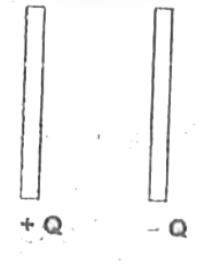A parallel plate capacitor is charged and then isolated. On increasing the plate separation
Charge Potential Capacitanceremains constantremains constant decreases
Charge Potential Capacitanceremains constant increases decreases
Charge Potential Capacitanceremains constant decreases increases
Charge Potential Capacitance increases increases decreases
The correct Answer is:B
Step by step video & image solution for A parallel plate capacitor is charged and then isolated. On increasing the plate separation by Physics experts to help you in doubts & scoring excellent marks in Class 12 exams.
Updated on:21/07/2023Topper's Solved these Questions
- CAPACITANCEBOOK - RESONANCE ENGLISHCHAPTER - CAPACITANCEEXERCISE - Exercise - 2
74 Videos
- CAPACITANCEBOOK - RESONANCE ENGLISHCHAPTER - CAPACITANCEEXERCISE - Exercise - 3
26 Videos
- CAPACITANCEBOOK - RESONANCE ENGLISHCHAPTER - CAPACITANCEEXERCISE - Miscellaneous Solved Example
3 Videos
- ATOMIC PHYSICSBOOK - RESONANCE ENGLISHCHAPTER - ATOMIC PHYSICSEXERCISE - Advanved level problems
17 Videos
- COMMUNICATION SYSTEMSBOOK - RESONANCE ENGLISHCHAPTER - COMMUNICATION SYSTEMSEXERCISE - Exercise 3
13 Videos
Similar Questions
A parallel plate capacitor is charged and then isolated. The effect of increasing the plate separation on charge, potential and capacitance respectively are
View SolutionA parallel plate capacitor is charged from a cell and then isolated from it. The separation between the plates is now increased
View Solution
Knowledge Check
A parallel plate capacitor is charged and then isolated. The effect of increasing the plate separation on charge, potential and capacitance respectively are
Aconstant, decrease, decreaseBincrease, decreases, decreasesCconstant, decreases, increasesDconstant, increases, decreases.
A parallel plate capacitor is charged from a cell and then isolated from it. The separation between the plates is now increased
View SolutionA parallel plate capacitor is charged and then the battery is disconnected. When the plates of the capacitor are brought closer, then
View SolutionA parallel plate capacitor is charged. If the plates are pulled apart
View SolutionConsider a parallel plate capacitor is charged by a constant current I, with plate area A and separation between the plates d. Consider a plane surface of area A/4 parallel to the plates and drawn symmetrically between the plates. Find the displacement current through this area.
View SolutionA parallel plate capacitor is charged and the charging battery is then disconnected. If the plates of the capacitor are moved farther apart by means of insulating handles:
View SolutionA parallel plate capacitor is constructed with plates of area 0.0280m2 and separation 0.550mm. Find the magnitude of the charge on each plate of this capacitor when the potential between the plates is 20.1V

View SolutionConsider a parallel plate capacitor having charge Q. Then,

View Solution
